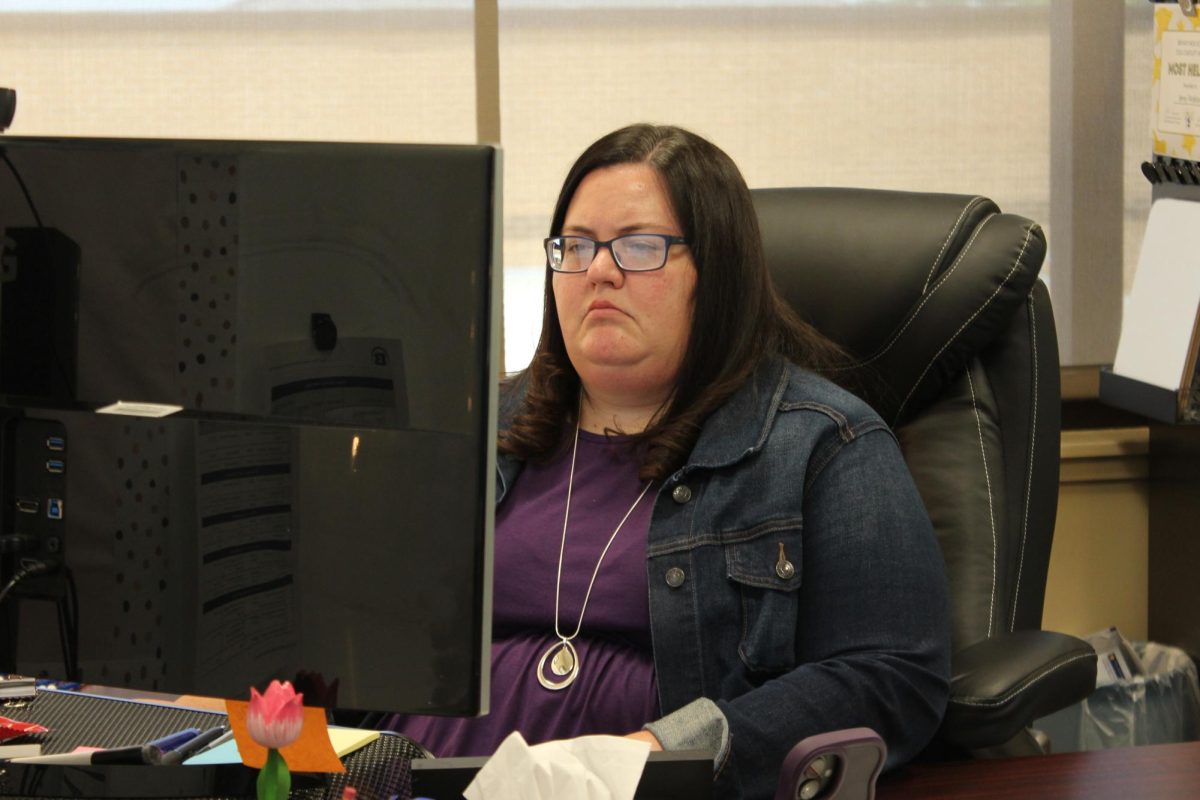She laughs, tilting her head back. Her tie-dye shirt is resting comfortably

atop her dark grey tights and she looks right at home, sitting criss-cross on the blue and black striped bed.
Sophomore Lulu Lessenberry has a crazy past, and she’s hoping to go far in academics. She plays bass clarinet in the band and she used to play basketball and volleyball.
She was also a victim of anorexia, the third most common form of chronic illness in teens.
“Sports started it all,” Lessenberry said, “I just wanted to be better.”
Lessenberry developed an eating disorder summer going into sixth grade. She only weighed 125 pounds, but the pressure of being skinny caused her to believe she was fat.
“My friends accidentally helped lead me into the eating disorder. They were all so small, and I just wasn’t.”
She said that she just wanted to be better at sports, and an eating disorder let her take care of the problem of cravings and let her lose the unwanted weight. Temporarily.
“At first it was just me trying to lose weight, you know, things like low-carb diets, and eventually it got the the point where I realized the less I would eat, the slimmer I would get,” Lessenberry said, “I would eat, and then leave to go throw it back up. It helped me to get better at softball, faster at track.. stuff like that.”
Lessenberry had the eating disorder for three years, and sometimes still feels like going into a relapse. When she realized that she had the eating disorder, she was already in recovery, but she was only eating because she felt that she had to.
“You don’t just realize that you have an eating disorder, and you don’t just wake up one morning and decide to fix yourself. It takes time,” Lessenberry said.
Only one in 10 people with eating disorders receive treatment. Lessenberry states that when she was going through this, she was alone, and that no one noticed. Not even her parents. Her weight dropped as low as 103 pounds.
“It was pretty easy to hide it,” Lessenberry said, “I told my mom that I was eating at school and I told my friends that I was eating at home.”
She didn’t get treatment, and the only way for her to figure it out was to slowly start eating again. This time, she was on her way to being healthy.
“I started eating again, not because I wanted to, but because I realized that I have to,” Lessenberry said.
When Lessenberry started noticing that she was getting too weak to play at a game or practice, she started eating big dinners every night to make sure that she would be able to make it through the next day without feeling too light-headed. Then, she would eat a few snacks after feeling fatigued. It started like this, and eventually Lessenberry was up to eating full meals again.
“It wasn’t easy, and it wasn’t on purpose by any means,” Lessenberry said. “When I finally got over it, for the most part, I realized how much strength it required for me to get to that point, and that there are so many other people going through this same thing. I didn’t have help, and they probably don’t either.”
One of the things that angered Lessenberry was the fact that in magazines there were pages and pages dedicated to diets.
“It seems that as soon as I was over the eating disorder, I saw so many things about weight loss and how to be thinner. It made me so upset. They were glorifying eating disorders and they’re anything but beautiful.”
Starting her freshman year, Lessenberry went on a mission to make all of the kids that need help, get help. She wanted to let other people know that they aren’t alone, and that she knows how it feels.
“I’ve never been turned down when I go to other kids attempting to help them. They always end up grateful and it gives me a sense of accomplishment,” Lessenberry said.
Lessenberry, now a healthy 140 pounds, has helped many kids conquer their fear of weight, and she finds pride and happiness in making students reach the same point that she has.
“Again, it takes a lot of strength to overcome an eating disorder,” Lessenberry said. “There are kids around the school that no one notices, that no one cares about. When I help them, they find the strength that they’ve been looking for possibly their whole life.”






